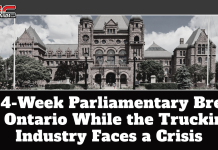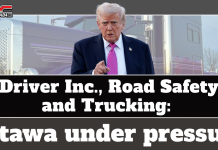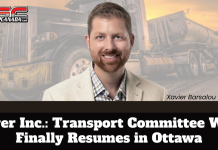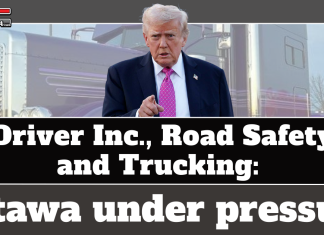The “Driver Inc” model, increasingly prevalent in the Canadian trucking industry, allows drivers to operate as independent businesses rather than as employees. While this model offers flexibility, it is often exploited to circumvent tax and social obligations, leading to serious consequences for the Canadian government and society as a whole.
Over a Billion Dollars in Lost Revenue
Every year, the “Driver Inc” scheme deprives the Canadian government of more than a billion dollars in tax revenue. These losses are primarily due to underreported income and the lack of payroll deductions for social contributions. As independent contractors, incorporated drivers are not subject to the same stringent rules as regular employees when it comes to tax filings and social contributions.
Impact on Public Infrastructure and Services
The loss of tax revenue directly affects the government’s ability to fund essential public infrastructure and services. Funds that should be collected to improve roads, hospitals, schools, and other public infrastructure are being siphoned away. This not only diminishes the quality of life for citizens but also threatens Canada’s long-term economic competitiveness.
A Model of Unfair Competition
The “Driver Inc” model allows transport companies to cut labor costs by avoiding the social charges and taxes associated with regular employees. This practice creates an uneven playing field for compliant companies that adhere to all their tax and social obligations. Companies using “Driver Inc” can offer lower rates, undermining the viability of responsible and compliant businesses.
Transport companies must consider raising their bid rates to strengthen their structures, offer competitive salaries, and ensure decent benefits for their employees. By investing in their workforce, these companies can improve talent retention and provide superior service to their clients. However, these goals are difficult to achieve when fraudulent carriers undercut prices. This situation particularly affects brokers (owner-operators), who suffer more acutely than well-established companies. With fewer resources to absorb revenue losses, maintaining their operations becomes increasingly challenging.
A Call to Action
It is crucial for authorities to take action to end this practice. Stricter inspections, regular audits, and severe penalties are necessary to deter companies from resorting to this scheme. Additionally, raising awareness among drivers about the legal and financial implications of this model is essential to protect them and encourage compliance with tax and social laws.
Conclusion
The “Driver Inc” model is more than just an employment status issue; it is a systematic form of tax evasion that comes at a significant cost to Canadian society. By diverting billions of dollars from the state’s coffers, this scheme jeopardizes the quality of public infrastructure and services while fostering unfair competition in the trucking industry. It is time to take action to end this practice and ensure fairness and tax justice for all.
Implementing measures to ensure equity and social justice for all trucking workers in Canada is essential. Let’s stop Driver Inc now!
More :














